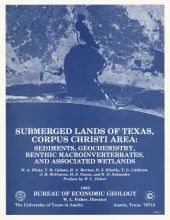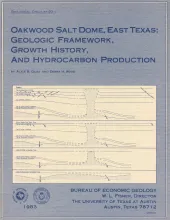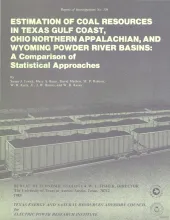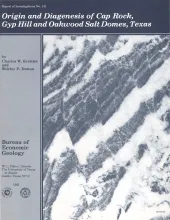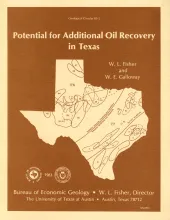The State-owned submerged lands of Texas encompass almost 6,000 mi2 (15,540 km2). They lie below waters of the bay-estuary-lagoon system and the Gulf of Mexico and extend 10.3 mi (16.6 km) seaward from the Gulf shoreline (fig. 1). The importance of these lands and their resources to resident flora and fauna as well as to people is well known and documented; more than one-third of the state's population is concentrated within an area of the Coastal Zone that is only about one-sixteenth of the state's land area.
The top of mushroom-shaped Oakwood salt dome is approximately 210 m (700 ft) beneath the boundary of Freestone and Leon Counties near the southwestern end of the East Texas Basin, The dome is surrounded by Jurassic, Cretaceous, and lower Tertiary marine and nonrnarine strata. A salt pillow initially formed in Late Jurassic “Smackover” time, when faulting contributed to uneven sediment loading of the Louann Salt.
Official estimates of United States coal resources published during the past 15 years vary from less than 1.5 to 3.5 trillion metric tons (1.7 to 3.9 trillion short tons). These differences imply that a high degree of uncertainty exists in resource assessment. This report identifies sources of uncertainty in coal resource estimation. Our report focuses on the comparison of variability in coal resource estimates in areas of different ancient depositional environments.
Petrographic and geochemical studies of caprock core from two salt domes, Gyp Hill in South Texas and Oakwood in East Texas, reveal the significantly different diagenetic histories of each dome. Cap rock on Gyp Hill is now forming within a shallow meteoric aquifer. In contrast, cap rock on Oakwood Dome formed principally during the geologic past within deep, saline aquifers in the East Texas Basin. Gyp Hill cap rock, which is 890 ft (271 m) thick, is composed of 490 ft (149 m) of anhydrite overlain by 400 ft (122 m) of gypsum.
Texas has long been a major oil province, accounting for nearly 40 percent of the historic production of crude oil in the United States. Texas now holds less than 30 percent of the Nation's proven reserves and less than 15 percent of its estimated as-yet-undiscovered oil. Discovery and conventional production of oil in Texas have peaked, but more than 100 billion barrels of oil now classed largely as unrecoverable still exist in Texas. This oil, even with the geologic, technical, and economic constraints on its recovery, constitutes a major target for future production.


